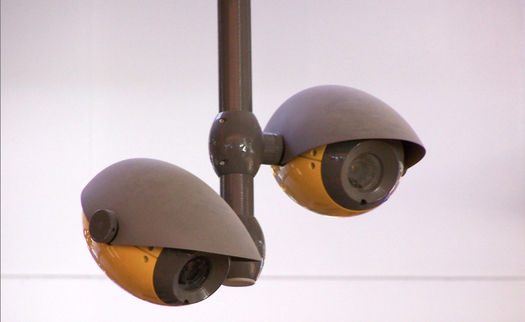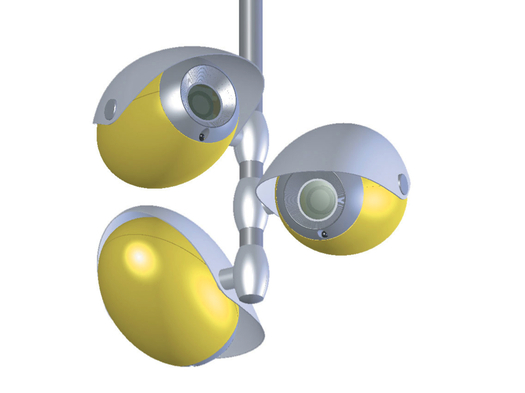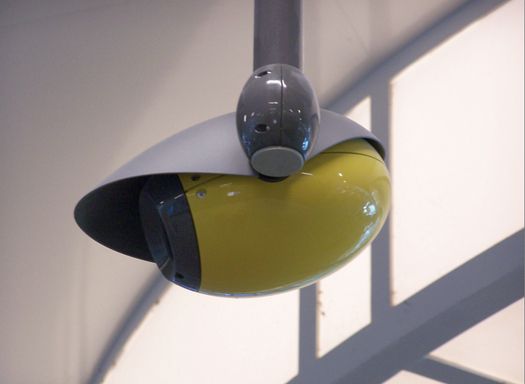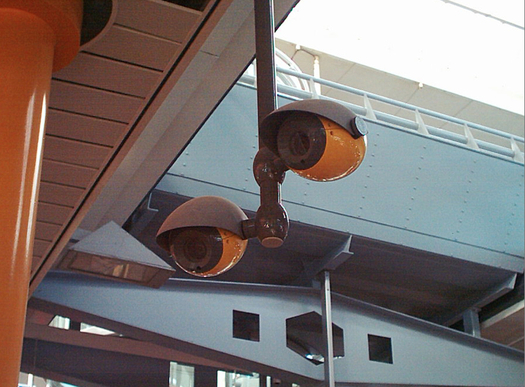
All images courtesy of Fabrique.
Does it matter what a security camera looks like? After all, the object's function is to see, not be seen, right?
Or is there, actually, more to it than that?
I’ve pondered this before, noting here a few months back my interest in how some security cameras seem shy, and others boldly announce themselves (generally as a kind of warning).
Either way, let’s face it, the rectangular-style closed-circuit television camera is in the category of a stealth icon: We all recognize it, and it says “surveillance.” Consider a recent New Yorker illustration for a story about National Security Agency surveillance (which has nothing to do with video cameras) — a tree of boxy CCTV devices topped by an American flag.
We all get it immediately. And it’s not exactly comforting.
Not long ago, Anne Miltenburg brought to my attention the most thoughtful take I’ve yet encountered on the question of what a security camera ought to look like. It’s a project for Dutch Railways, implemented a few years ago by Amsterdam-based firm Fabrique — and it resulted in a form of security camera that expects to be seen.
I got in touch with that firm’s creative director, Jeroen van Erp, and we spoke via Skype a couple of weeks ago. “The goal was to reduce the Big Brother feeling,” van Erp told me, straightaway. Dutch Railways (or NS), had done some research on “what kind of emotions were or weren’t evoked” by its camera system.
“People knew there were cameras,” he continued, but they didn’t always know where they were (since the cameras were mounted to see, without much thought to being seen). And when they did spot one, they didn’t necessarily feel great about it. According to the data van Erp gave me, research found that while 68% of subjects agreed that the cameras they saw made them “feel safe,” an alarming 34% also said the objects inspired “a ‘big brother’ feeling.” (And a mere 9% found the things “beautiful,” which is actually a surprisingly high number, to me.)
“So we said: Let’s try to change attitudes, with design,” van Erp said.
Here’s the Fabrique sketch board, and I think the notable influence here is the friendly Pixar character.

Rounded edges, bright colors, a more organic sense of living “eye”-ness: The upshot was a camera that’s comfortable being visible.
The cameras were also deployed in a more determinedly visible way, acknowledging that people should see them.
“Why not be honest,” van Erp asks, “and show that you’re watching people — or watching spaces, to keep people safe and secure?”


As security cameras go, I do find Fabrique’s creation appealing: It’s warm, charismatic.
Certainly it doesn’t feel stern and oppressive or menacing, as traditional box-style CCTV cameras do.

The data van Erup gave me suggests that the public agrees with this sentiment, and responded positively to these cameras. The percentage who called the object “beautiful” leapt to 80%; those reporting Big Brother vibe dropped to 12%. And the obviously critical safe-feeling response rose a bit — to 71%.
Of course there’s an interesting question lurking in the background here. Even it if it’s possible to make security cameras look like our friends — are they?
Or is inviting design serving here as a kind of disguise?
I don’t question the motives of Dutch Railways or van Erp, of course. Frankly, I think any step toward making these cameras things we look at and consider is a plus.
But it’s interesting — it's disconcerting — to consider what it might mean to like a security camera.
If you have seen other examples of thoughtful security camera design, please let me know in the comments or @notrobwalker or the "contact" mechanism here. And thanks again to Anne Miltenburg!
